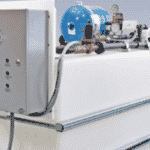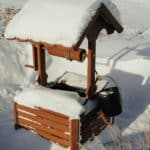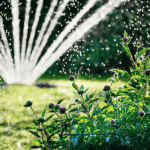Droughts and low yield wells: Well Manager looks at the negative impact extended periods without rain can have on your water pressure and offers some solutions for coping during these dry spells.
How Droughts Affect Water Pressure
As summer approaches and temperatures climb, we all look forward to sunny days when we can enjoy spending time outdoors. Whether it’s barbeques with family and friends, trips to the beach, or a sail on a lake, no one wants a downpour to dampen their plans. On the other hand, prolonged periods without rain lead to drought which, in turn, leads to water pressure problems, especially for owners of low yield wells.
According to the National Centers for Environmental Information, as of the end of this past May, about 16% of the contiguous United States was experiencing moderate to extreme drought conditions. For homeowners with low yield wells, conditions like these mean they can expect even lower pressure from their poorly producing wells.
Even under the best conditions, spring and summer can be tough on low yield wells. This is the growing season for trees and plants that vie for the same groundwater your well does. It isn’t until late fall, after the plants stop growing and before the soil freezes, that groundwater sources replenish adequately.
Wells draw water from the ground via a submersible or a jet pump. As water levels drop, these pumps have a harder time drawing enough water to meet your needs, especially during peak usage times. If groundwater levels fall below your pump mechanisms and the pump is allowed to continue running, you risk burning out the motor and face costly repairs.
Coping with Dry Spells
There are steps well owners can take to conserve water during a drought:
- Schedule water activities – showers, dishwashing, laundry – so you are not putting undue demand on your well water system all at one time.
- Turn faucets off when brushing teeth or lathering hands to wash.
- Repair drips and continuously running toilets.
- Install low-flow faucets and showerheads.
- Reuse cooking water for watering lawns or gardens.
- When waiting for water to get cold or hot, rather than let it run down the drain collect it for other uses like filling your pet bowls or watering your houseplants.
- Collect rainwater for cleaning or watering purposes.
The important thing is to prevent your pump from running without water. It may be possible to lower your pump in your well so that it remains submerged. Alternatively, turn your pump off if you think your well is running dry or, if you have the option, set the pump on a longer timer cycle.
Well Manager May Have Your Answer
Well Manager products are designed to protect your well pump by providing an even draw from your well in off-peak times. In this way, water is available when you need it without putting excess demand on your pump. For more information on how Well Manager can help increase water pressure from your low yield well, even in times of drought, talk to one of our well water specialists today.






